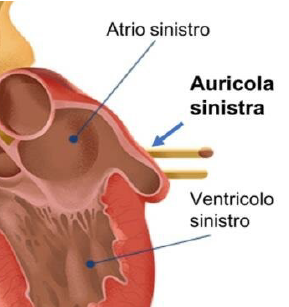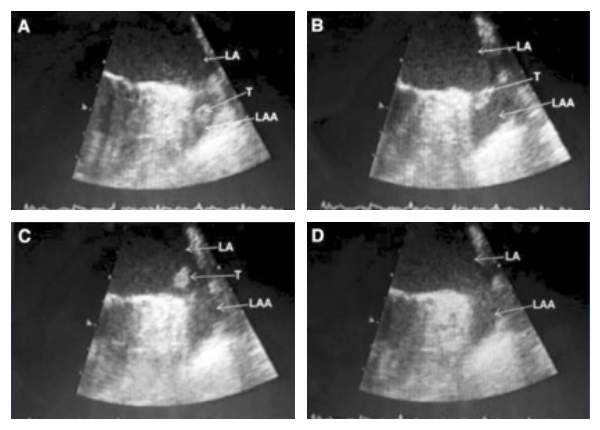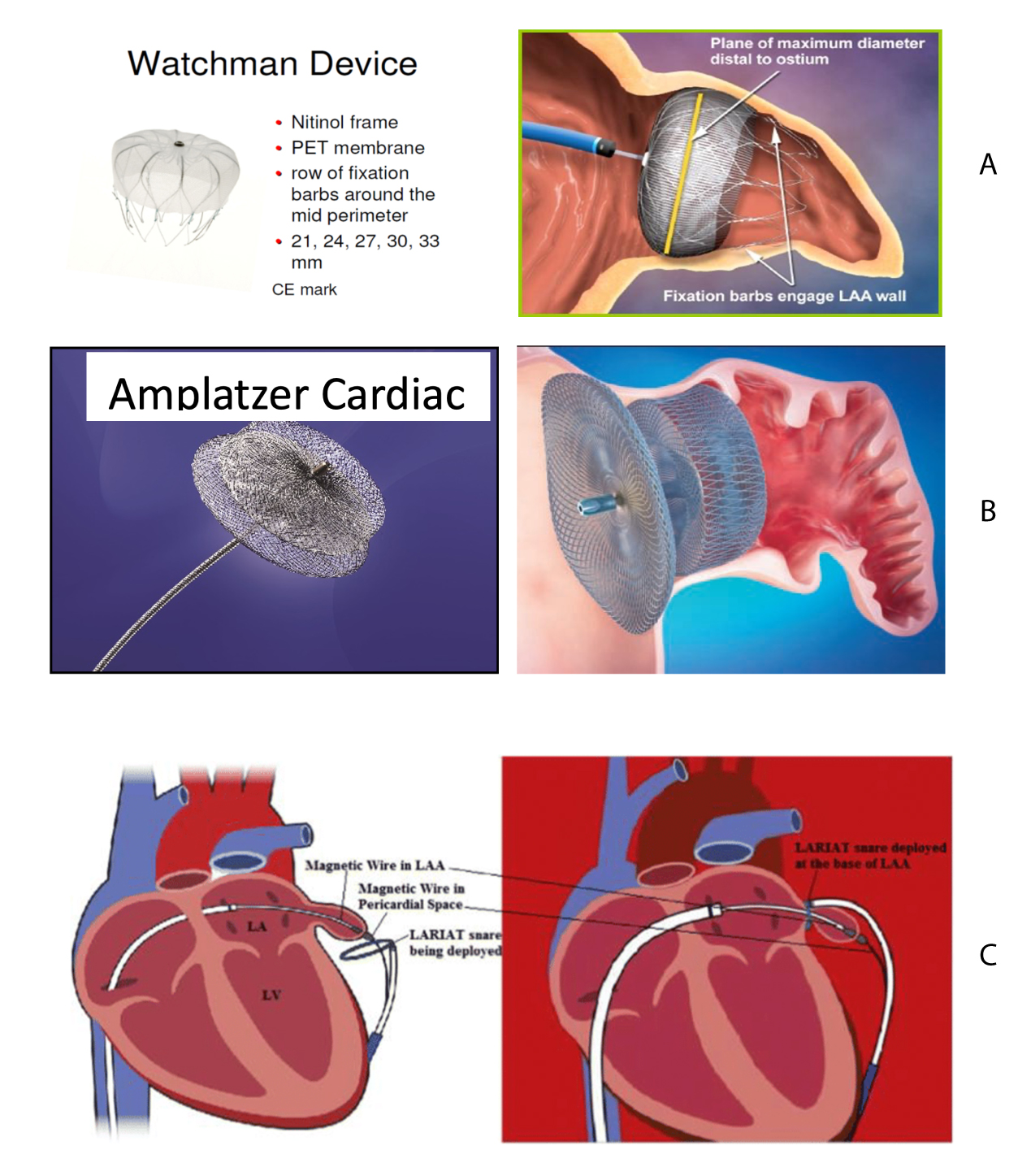What is the left atrial appendage?
The left atrial appendage is an extension of the left atrium, varying in shape and size among individuals, though generally small in dimensions, where blood flows more slowly (Fig. 1).

Why is left atrial appendage closure performed?
In cases of atrial fibrillation, the atrial walls lose their ability to contract effectively, causing blood to stagnate, particularly in the appendage. This stagnation can lead to blood clots forming within the appendage, which may subsequently escape into the bloodstream, causing peripheral embolisms, particularly ischemic strokes (Fig. 2).
20% of all ischemic strokes are caused by atrial fibrillation.
At-risk patients are usually prescribed anticoagulant medications to mitigate this risk.

When anticoagulants are contraindicated, poorly tolerated, or ineffective for a patient, an alternative is to close the appendage to prevent blood from circulating within it, thus eliminating the risk of clot formation.
How is left atrial appendage occlusion performed?
The procedure is performed percutaneously via the blood vessels in the groin, similar to ablation procedures. Patients are generally sedated, and general anesthesia is typically unnecessary. Once the left atrium is accessed, a device is positioned within the appendage to completely occlude its lumen, excluding it from blood circulation (Fig. 3A, 3B).

In high-volume centers, the procedure has a success rate exceeding 95%,
with a complication rate below 1%.
The electrophysiologist selects the technique based on the patient's characteristics.
Dr. Grossi's Experience
Dr. Grossi has over 15 years of experience in percutaneous left atrial appendage occlusion and was the first in the world to develop and perform a combined procedure of endo-epicardial atrial fibrillation ablation and left atrial appendage occlusion using the Lariat system. For cases of atrial fibrillation resistant to standard ablation procedures, occlusion of the appendage using the Lariat lasso not only achieves hydraulic closure, eliminating the stroke risk, but also causes atrophy that eliminates its electrical activity, a key factor in maintaining atrial fibrillation.

